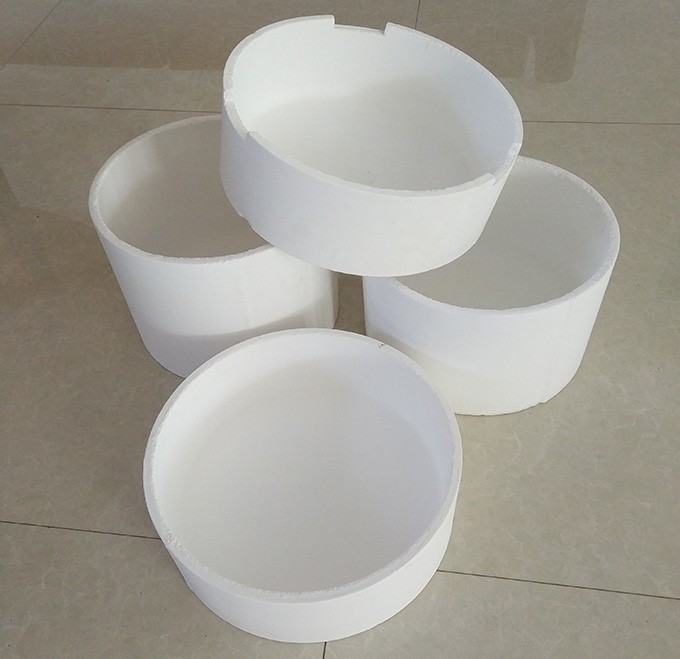According to different formulation processes, quartz crucibles are generally produced and molded using two methods: injection molding or solidification molding. These two production processes are generally the same. However, due to certain differences in production methods, the selection of supporting equipment for the two process flows is still different.
(1) Production process of grouting method
The injection molding method has a long history and is relatively traditional in the production process of ceramics. It is relatively easy to master and is currently the most commonly used production molding method. The grouting method is widely used in the production of quartz crucibles.
The general production process of grouting method: grouting molding - demolding - flipping - solidification - initial inspection - billet repair - drying - calcination - trimming - final inspection - packaging
Main supporting production equipment for grouting production: stainless steel mold - cantilever suction cup lifting machine - demoulding and turning machine - demoulding platform - curing furnace - initial inspection line - cantilever suction cup lifting machine - low air dryer - cantilever suction cup lifting machine - calcination furnace - cantilever suction cup lifting machine - trimming machine - cantilever suction cup lifting machine - final inspection and turning machine - light detection rotating table - light final inspection table - final inspection line - cantilever suction cup lifting machine - packaging
Due to the generally 8-hour demolding time for injection molding, the molding efficiency is relatively low, and the output should not be too large.
(2) Production process of injection molding method
The injection molding method has just emerged in the production of quartz crucibles, and the process difficulty is relatively high, making it difficult to master. It is relatively less commonly used in the production process of quartz crucibles. But this method can greatly shorten the demolding time and improve demolding efficiency compared to the grouting method, and has certain advantages in large-scale production.
The injection molding method is not easy to master in the production of quartz crucibles, and currently a few companies in China are using this method. Due to its certain advantages in large-scale production, it is the development direction of future production processes.
The general production process of injection molding method: injection molding - demolding - flipping - initial inspection - billet trimming - drying - calcination - edge trimming - final inspection - packaging
Main supporting production equipment for injection molding production: stainless steel mold - cantilever suction cup lifting machine - demoulding and turning machine - demoulding platform - initial inspection line - cantilever suction cup lifting machine - low air dryer - cantilever suction cup lifting machine - calcination furnace - cantilever suction cup lifting machine - trimming machine - cantilever suction cup lifting machine - final inspection and turning machine - light detection rotating table - light final inspection table - final detection line - cantilever suction cup lifting machine - packaging

(3) Process comparison
Due to the fact that the grouting method relies on gypsum molds to absorb water for drying, the demolding time is longer and the production efficiency is lower. The injection molding method uses a steel mold, but with additives added to the product ingredients. The blank can quickly solidify and form during the production process, improving strength and making it easy to demold quickly. After demolding, the blank has high strength and does not need to be cured in a curing furnace. But during the calcination process, these organic additives will decompose and evaporate, thereby reducing the density and strength of the product. At present, the methods for improving the density and strength of finished products in China have been basically solved.
From the above comparative analysis, it can be seen that the two production processes use basically the same supporting equipment, except that the injection molding method does not require a curing furnace to cure the billet, and the process flow and other supporting equipment are basically the same.


